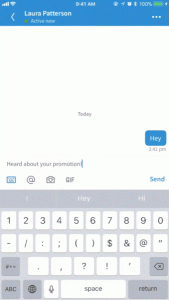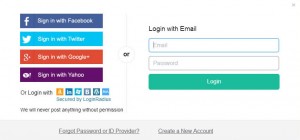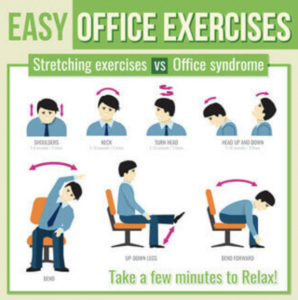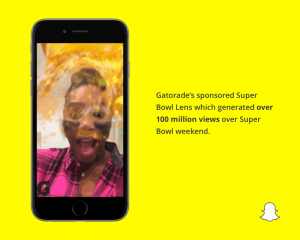Email marketing is one of the most effective sources for lead nurturing and management. After all, 42 percent of companies name email as one of their most effective lead generation tools.
On-site retargeting works by monitoring the behavior of your visitors in real-time on your site. When a visitor’s behavior indicates they might be looking towards the exit, an additional message can be displayed to them – usually in a pop-up overlay.
This exit-intent technology works by monitoring the movement of the mouse. When the system detects that a visitor is about to leave your site (by the movement of their mouse towards exiting the page or clicking bookmark links) a secondary message pops up to appeal to your visitors and engage with them further.
In this post, I’ll present a few methods and tools to organically grow and build a healthy, permission-based email list through on-site retargeting.
1. Include a sign up offer in an exit-intent pop-up
There are several types of pop-ups that can be used to keep otherwise departing visitors engaged. But when it comes to list building, the most effective ones collect contact details. A well-timed and controlled sign up pop-up is a strong way to keep your prospects engaged at the right time and get them to opt-in to your email list.
For example, online shoe store ZooShoo gathered 5,468 extra subscribers in 2 months using the following pop-up, of which 1,129 became customers, increasing their revenue by 7.35%.

2. Use YES-NO pop-ups in multi-page campaigns
The average website visitor prefers to click first and then fill in a form. You can take advantage of this and create multi-step on-site retargeting campaigns to increase your subscriptions. One approach is a simple YES-NO pop-up which appears before the subscription form.
Take a look at this example from cosmetics company, BOOM! by Cindy Joseph that uses 2 sequential pop-ups to get more club members and newsletter subscribers. The first YES-NO pop-up measures the visitors’ interest:

The second pop-up with the subscription form can be only seen by visitors who click on YES. Such visitors are excellent potential newsletter subscribers as they have already confirmed their interest in your brand during step one which allows you to quickly filter out prospects that aren’t.

3. Personalize your message
Visitors are more likely to stay engaged with your business if the pop-up is relevant to their specific needs and interests. This means you’ll be able to organically increase your subscription rate by communicating the right message at the right time to each segment of your audience.
Here’s an example from Digital Marketer. Using this on-site retargeting campaign, they were able to get almost 3,000 additional subscribers in only 2 weeks.

When a visitor shows a specific interest, the most relevant pop-up will appear. For example, Digital Marketer presents this blog-related giveaway to visitors who are interested in blogging:

4. Use dynamic personalization
For more advanced personalization, use Dynamic Text Replacement in your pop-ups to alter the text based on any variable you wish. This way, you can display highly targeted messages to individual visitors using only one pop-up.
One of the best ways to use Dynamic Text Replacement is when you want to promote different category discounts for individual visitor demographic segments. This gives your prospects and clients the feeling that the brand they are engaging with knows them which increases their willingness to stay in touch and sign up for relevant news, updates or promotions.
With Dynamic Text Replacement, you only need to design one pop-up and the right message to the right person displays automatically.

5. Use nanobars
Just like a less flashy on-site retargeting pop-up that appears on exit intent, a nanobar or notification bar, can be used to gather subscribers. Nanobars are also called “sticky bars” because they “stick” to the top or bottom of a website.
Nanobars are typically triggered based on engagement. If you feel your visitors find exit-intent pop-ups too intrusive, nanobars are a great alternative that can be adapted to fit your site’s user experience.
In the example below from OptiMonk you can see how a nanobar can be used for list building. This simple nanobar appears as part of the website and makes it very convenient for visitors to provide their email address and promotes the offer of a free ebook in return.

6. A/B test your messages
A/B testing gives you the power to test which on-site retargeting campaign generates more subscribers. You can learn what design and content elements should be changed, what should be removed and what should stay.
You can improve your subscription rate by eliminating your under performing pop-ups. This can boost your opt-in subscriptions by as much as 40%.
Conversific.com, which specializes in CRO for ecommerce sites, tested two different headlines in their on-site retargeting message, the winning message outperformed the other pop-up by 47%.

7. Promote a free giveaway
Your visitors are more likely to provide their email address if they receive something useful in return.
Your giveaway should be easily consumable content and helpful for your prospects. We’ve found the following giveaways usually work well: e-books, cheat sheets, checklists, case studies, webinars or video series.
Antavo.com, a B2B software solution, uses a well-designed exit-intent pop-up to promote an ebook to early stage customers.
Summing it up
As you can see, there are a variety of great on-site retargeting methods and tools available to engage your visitors and get them excited to opt in to your emailing list.
That being said, make sure to only email consumers about the information they signed up to receive. For example, if they sign-up to receive a promo code, it’s bad practice to automatically add them to your newsletter list, too, without asking them first. Our suggestion? Include a newsletter opt-in check box directly on your retargeting message or if you are capturing sales leads, be sure to remind your sales team to ask the prospect if they wish to sign up to the company newsletter before adding them to your organisation’s marketing list. Last but not least, always remember to have your data privacy link readily available on your main web site.
Remember, your consumer’s are an asset, so go for the long-term relationship!
Using the right platform, your on-site retargeting campaign can be set up within a couple of hours – A short amount of time compared to the results you’ll potentially get.
Digital & Social Articles on Business 2 Community(109)
Report Post







